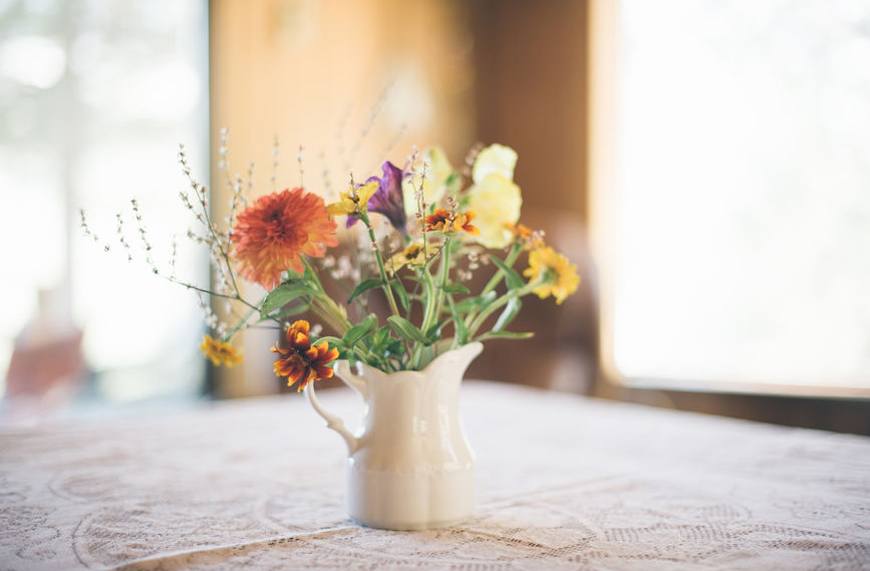How to Put Together a Wildflower Arrangement As Gorgeous As Any on Pinterest
When it comes to creating the quintessential fall bouquet, symmetry just isn't the name of the game.
Enter the wildflower bouquet: The hands-down best way for vegetation-lovers to start paying tribute to autumn (IMO). Whether you're gearing up to host a women's circle to celebrate the Equinox at the end of September or simply in search of a seasonal centerpiece for your desk, below, you'll learn how to pull off the free-spirited arrangement from Christina Stembel, "Chief Farmgirl” at Farmgirl Flowers—a San Francisco-based florist.
Get plucking: Here's how to create a wildflower arrangement.

Step 1: Don't pick your wildflowers until 4 hours before you plan on displaying them
"With wildflowers, the thing that most people don’t realize is that they don’t actually last very long," explains Stembel. So while you can pillage your backyard and local parks for stems to arrange into a mason jar, you should only count on those staying perky for four hours—tops. "Do it right before you want to enjoy them. If you’re cutting them from the field by your house or your yard, then put them in clean water and take off all of the foliage that’s going to fall below the water line. That'll help a lot for them to stay looking good for your event," says the floral expert.

{{post.sponsorText}}
If you want to enjoy your bouquet for days, rather than hours though, Stembel recommends using bred flowers that just resemble wildflowers instead. So if you're into that idea instead, keep reading.
Step 2: Choose 2 (just 2!) colors of flowers that give off a whimsical, wild vibe
While your inner-child might be tempted to grab a handful of the most colorful blooms to catch your eye at the farmer's market, Stembel says that KISS (keep it simple, er, sunflower) rule totally applies here. "For wildflowers, what I typically do is just pick two colors," she advises. One of her go-to combos is purple and yellow, but choose two hues that work with your home or office decor.
As far as varieties go, lavender, scabiosa, and veronica are some of Stembel's faves, but any flower on the petite-side with dusty, less vivid shades will work. To make the arrangement even more dynamic, opt to intersperse these more bulbous breeds with linear or fern-like ones like snapdragons, long ferns, plumosa, or delphiniums.
Step 3: Stagger your blooms, and voilà, you have the perfect bouquet
"Staggering is always key for any bouquet," declares Stembel. If you don't create an interesting shape for the eye to follow, you'll end up with what the team at Farmgirl Flowers terms a "flat top" arrangement. (Just picture the bouquet emoji on your phone.) Instead, think of your task like contouring—so one side can feature the taller, more linear stems, while the other showcases the smaller blooms. When it comes to creating the quintessential fall bouquet, symmetry just isn't the name of the game.
Of course, you can also dry your bouquets out to enjoy on future fall days. To do that, just remove your centerpiece from the water and hang it upside down in well-ventilated part of your home without direct sunlight. Fast forward a few weeks, and that same arrangement will now have a classic-vintage twist that you can place haphazardly throughout your healthy home for effortless fall florals. And that's it. Now all you need are some Insta-ready pumpkins to polish off the look.
Here's why we've officially reached *peak* plant-lady. Plus, how to keep your mini-home garden thriving.
Loading More Posts...